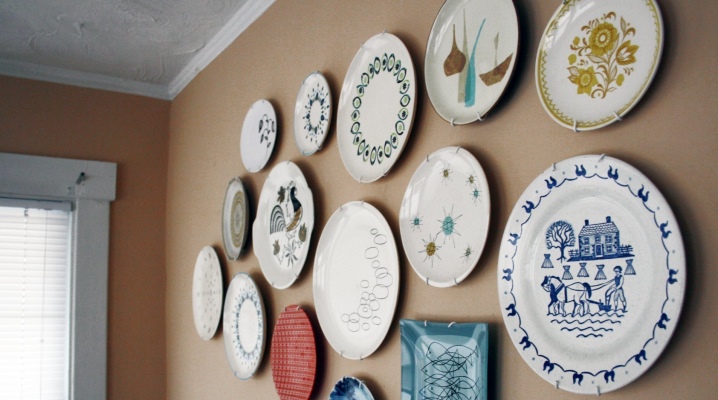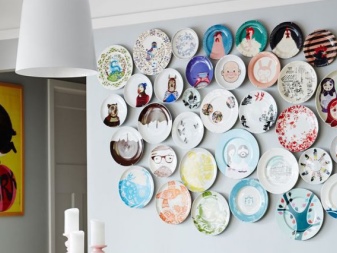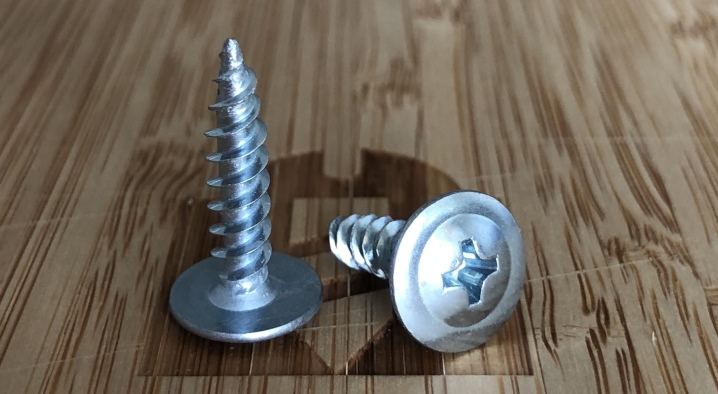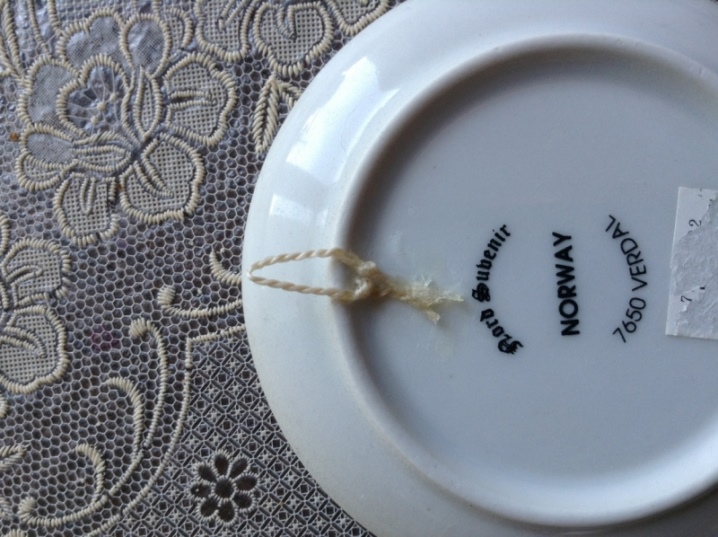How to hang a decorative plate on the wall?

Decorative plates are interior decoration items included in the wall category. The appearance of these products implies their use as a design addition to almost any room.


Peculiarities
Decorative plates can be made from wood, ceramic, porcelain, plastic, and even paper. Their design is represented by a combination of a wide range of colors, shades, geometric patterns, ornaments and images.
Plates can be of different sizes and shapes, which gives the interior in which they are used, the character of a bright personality. In each specific composition, it is allowed to use a set of plates that have different sizes, shapes and design, but the style of such a set should be the same.


To hang such decorations on a vertical surface, you need to use two types of holders. One holder fits on the back of the plate and the other fits into the wall. If the plate is made of wood, plastic or polyurethane, small screws can be used. In this case, it is taken into account that some part of the self-tapping screw will have to protrude above the surface of the rear plane of the decorative product.

If the plate is made of ceramic, porcelain or glass, you will have to do without drilling. This is due to the properties of these materials - density and fragility. Drilling a self-tapping hole in a glass or ceramic dish is extremely difficult.

At home, without the use of specialized equipment, it is not possible to carry out this procedure without damaging the material.
Subtleties of installation
Installation of fasteners on the back of a plate made of soft materials is as follows. A line is drawn on the flat part of the back of the plate. It should be horizontal with respect to the pattern on the outside. The displacement of the line up or down from the center depends on the design decision.
The closer you place the line to the center, the greater the angle of inclination of the plate downward relative to the plane of the wall will be.
A small corner is encouraged. The plate, tilted forward relative to the wall, gets under the best viewing angle and looks more complete. In addition, the wall-mounted fastener prevents the plate from snuggling to it. In this case, the angle of inclination of the plate compensates for the protrusion of the wall fasteners.
Two screws are screwed into the back plane of the plate at a certain distance from each other. This distance depends on the diameter of the bottom. The greater the distance, the better. The load that will be on the attachment points after hanging is then evenly distributed and the plate hangs correctly.

Screwing in screws is done with extreme care.
It is important to control the depth of their penetration and the level of damage that occurs when the threaded part of the screw passes through the material of the plate.
To prevent the plate from cracking at the points of screwing in the screws, the mounting holes are drilled. To do this, use a drill, the diameter of which is several units less than the diameter of the threaded part of the self-tapping screw. The depth of the holes is controlled by winding adhesive tape, scotch tape, electrical tape or plaster on the drill.A piece of such material is wound on a drill at some distance from its tip. This distance is calculated depending on the thickness of the bottom of the tray.

A strong thread or fishing line is pulled between the screwed in screws. Both its edges are screwed under the caps of the self-tapping screws. The length of the thread should exceed the distance between the centers of the screws by several units. This is necessary to prevent the occurrence of tension on the thread and its gradual chafing.

Gluing method
When installing a decorative product, the suspension fixed with an adhesive:
- silicone sealant;
- liquid Nails;
- epoxy adhesive;
- hot melt glue;
- Double-sided tape;
- other adhesives.


When using construction adhesives - silicone or liquid nails, it is important to make sure that the substances that make up them do not react with the material from which the plate is made, for example, plastic or polyurethane. It is necessary to carefully read the instructions for use given on the packaging of the tube with glue.
- Epoxy is neutral, which makes it versatile. It is suitable for gluing any material. The only drawback of this adhesive is the need for skill in its use. Exact adherence to the proportions of the hardener and epoxy is required.
- Hot melt glue used in combination with a glue gun is also neutral. However, when using it, it is important to ensure that the temperature at which it becomes liquid is not critical to the material from which the tray is made.
- Double-sided tape is not the best way to glue the pendant, but if you don't have an alternative on hand, you can use it as well. To reduce the likelihood of detachment of the fastener, it is worth using automotive double-sided tape, the cost of which is not the lowest. The properties of this material allow small objects to be adhered to extremely smooth surfaces such as glass.



In order to attach the hanging loop to the back of the plate with an adhesive, two spacers must be prepared. You can use cork, rubber, plastic and other materials to make them. A piece of balsa wood can be cut from the bottle stopper used to seal wine bottles. Plates are cut from this material, the thickness of which does not exceed 5 mm. Rubber or plastic gaskets can be purchased at a plumbing or auto store.

The main requirement for these parts is the absence of a through hole.
Marks are made on the back of the plate using a marker or pencil. Their location should coincide with the screw-in points of the self-tapping screws used when mounting fasteners on plates made of softer material. The marks are set strictly on one line, horizontal with respect to the pattern applied to the front surface of the decorative product. Otherwise, the cymbal pattern will look skewed. A sufficient amount of adhesive is applied in the area of the marks. The hanging thread is laid in such a way that its edges pass through the points smeared with glue. To ensure reliable fastening of the thread, you can tie knots on it, which will be located at the gluing points. Spacers, on which a small amount of adhesive mixture is also applied, is applied to the marks made on the back of the plate. As a result, we get 2 glued surfaces - the material of the plate and the gasket, which are in contact with each other through the glue, and between them there is a thread for suspension.

We fix it on the wall
To hang the plate on the wall, you need to prepare the fasteners that will be located on the wall. To do this, a hole of the required diameter is drilled and fasteners are mounted in it.The drilling method is determined by the characteristics of the material from which the walls are made. Brick, block or concrete is drilled with a hammer drill and a special drill bit with a carbide tip. Wood, drywall or aerated concrete is drilled with a drill and a conventional drill.

A dowel plastic sleeve is used as a fastening element, into which a self-tapping screw or a hook is screwed. If the walls are wooden, then you can use a regular nail, which is driven in at a slight angle in relation to the wall. The angle of inclination is needed so that the plate, suspended on a nail, does not accidentally fall.


When attaching a plate to a drywall wall, special devices are used. As a mounting sleeve, you can take the so-called butterfly or bug - this is a dowel with special side protrusions. When screwing a self-tapping screw or a hook into the sleeve, these protrusions move apart to the sides and provide reliable fastening.

What should be considered?
In order to fix decorative plates on the wall, you must follow the safety rules. Work carried out with a power tool, as well as manipulations performed with plates made of fragile materials, require increased attention. When drilling mounting holes in the wall for fasteners, it is important to take into account the internal location of the electrical wiring, which will avoid damage and create an emergency.

For information on how to make a do-it-yourself mount for a decorative plate, see the video below.









The comment was sent successfully.